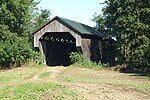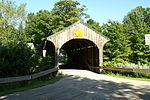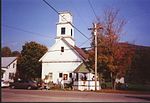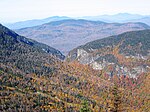Grist Mill Covered Bridge
Buildings and structures in Cambridge, VermontBurr Truss bridges in the United StatesCovered bridges in Lamoille County, VermontCovered bridges on the National Register of Historic Places in VermontNational Register of Historic Places in Lamoille County, Vermont ... and 2 more
Road bridges on the National Register of Historic Places in VermontWooden bridges in Vermont
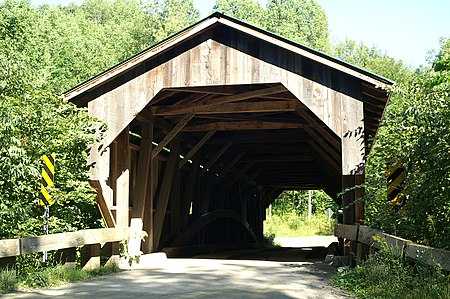
The Grist Mill Covered Bridge, also known as the Scott Covered Bridge, the Bryant Covered Bridge, and the Canyon Covered Bridge, is a covered bridge that carries Canyon Road across the Brewster River, off Vermont Route 108 in Cambridge, Vermont. Built in the 19th century, it is one of a small number of surviving Burr arch truss bridges in the state, and is one of three left in Cambridge. It was listed on the National Register of Historic Places in 1974.
Excerpt from the Wikipedia article Grist Mill Covered Bridge (License: CC BY-SA 3.0, Authors, Images).Grist Mill Covered Bridge
Canyon Road,
Geographical coordinates (GPS) Address Nearby Places Show on map
Geographical coordinates (GPS)
| Latitude | Longitude |
|---|---|
| N 44.636666666667 ° | E -72.825 ° |
Address
Canyon Road
05464
Vermont, United States
Open on Google Maps





